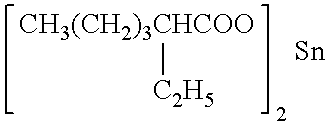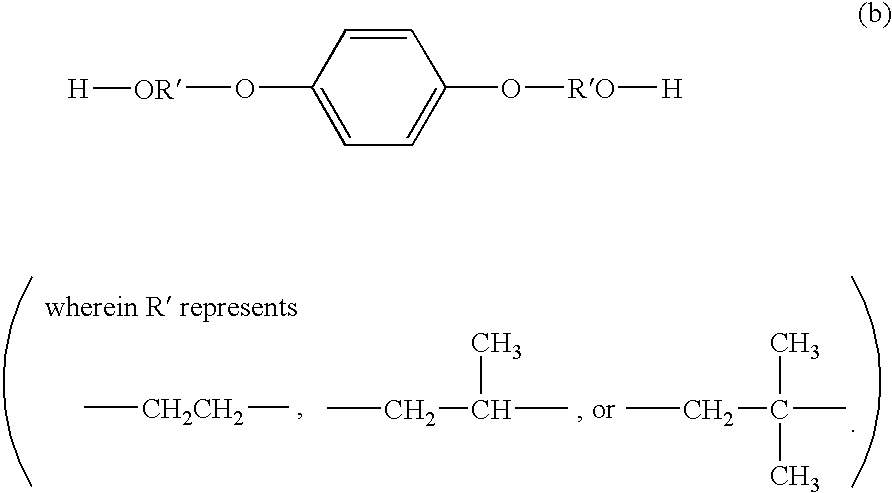Magnetic toner
a toner and magnetic technology, applied in the field of magnetic toner, can solve the problems of difficult to uniformly disperse toner, reddish tint of magnetic material, various problems, etc., and achieve the effect of avoiding contamination of developing sleeves, stable image density, and superior low-temperature fixing performan
- Summary
- Abstract
- Description
- Claims
- Application Information
AI Technical Summary
Benefits of technology
Problems solved by technology
Method used
Image
Examples
production example 1-1
[0146]Monomers for obtaining polyester and an alkylcarboxylic acid tin compound as a catalyst were introduced into a four-necked flask, and a vacuum device, a water separator, a nitrogen gas feeder, a temperature measuring device and a stirrer were fitted thereto. Reaction was carried out in an atmosphere of nitrogen, heating to 230° C. After the reaction was completed, the reaction product was taken out of the flask, then cooled, and thereafter pulverized to obtain Binder Resin 1-1 with a softening point of 138° C. The types of monomers and tin compound used and the physical properties of the resin obtained are shown in Table 6.
[0147]Binder Resin
Production Examples 1-2 to 1-10
[0148]Binder Resins 1-2 to 1-10 were obtained in the same manner as in Binder Resin Production Example 1-1 except that the amount and type of the monomers and alkylcarboxylic acid tin compound were changed as shown in Table 6 and that the reaction was carried out while confirming softening points and the reac...
production example 1-11
[0150]Monomers for obtaining polyester and an alkylcarboxylic acid tin compound were introduced into a four-necked flask, and a vacuum device, a water separator, a nitrogen gas feeder, a temperature measuring device and a stirrer were fitted thereto. With stirring in an atmosphere of nitrogen at a temperature of 130° C., a mixture of vinyl monomers shown in Table 6 and a polymerization initiator (dicumyl peroxide) was dropwise added from a dropping funnel over a period of 4 hours. This was kept at 130° C. for 3 hours, and thereafter heated to 230° C. to carry out reaction. After the reaction was completed, the reaction product was taken out of the flask, and thereafter pulverized to obtain Binder Resin 1-11 with a softening point of 140° C., containing a polyester resin component, a vinyl polymer component and a hybrid resin. The types of monomers and tin compound used and the softening point and other physical properties of the resin obtained are shown in Table 6.
[0151]Binder Resin...
production examples 1 -
Production Examples 1-a to 1-h
[0154]Binder Resins 1-a to 1-h shown in Table 7 were obtained in the same manner as in Binder Resin Production Example 1-1 except that the type and amount of the monomers and alkylcarboxylic acid tin compound were changed as shown in Table 7.
PUM
| Property | Measurement | Unit |
|---|---|---|
| Length | aaaaa | aaaaa |
| Length | aaaaa | aaaaa |
| Mass | aaaaa | aaaaa |
Abstract
Description
Claims
Application Information
 Login to View More
Login to View More - R&D
- Intellectual Property
- Life Sciences
- Materials
- Tech Scout
- Unparalleled Data Quality
- Higher Quality Content
- 60% Fewer Hallucinations
Browse by: Latest US Patents, China's latest patents, Technical Efficacy Thesaurus, Application Domain, Technology Topic, Popular Technical Reports.
© 2025 PatSnap. All rights reserved.Legal|Privacy policy|Modern Slavery Act Transparency Statement|Sitemap|About US| Contact US: help@patsnap.com



